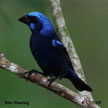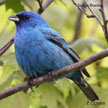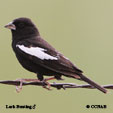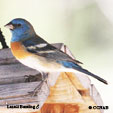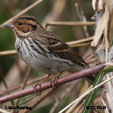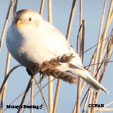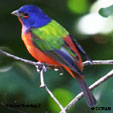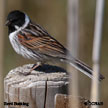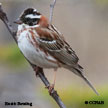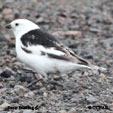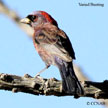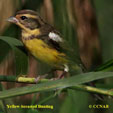Field Guide for all the Birds of North America
Buntings
Bruants
Emberizidae, Cardinalidae, Passerellidae, Calcariidae
Information, images and range maps on over 1,000 birds of North America, including sub-species, vagrants, introduced birds and possibilities
North American Bird Search Box
The buntings are found throughout North America, from the far north in the arctic circle, tundra, conifer forests, urban developments to the grasslands and savannahs of the south. There are 9 species of buntings in North America and another 7 species from Asia that have been identified and listed as rare visitors.

The Snow Bunting and McKay's Bunting are our most northern travelers. The Snow Bunting has the widest range and the McKay's Bunting is restricted to the western and southwestern areas of Alaska. Whereas the Lazuli Bunting, Rustic Bunting, Lark Bunting and Indigo Bunting can be found from southern Canada into northern Mexico depending on the time of year.
The Painted Bunting, Varied Bunting and the Blue Bunting live mostly in the southern states to Central America, with the Blue Bunting being the most southern bird.
There are also the rare visitors from Asia that show up in North America every now and then. These consist of the Gray Bunting, Little Bunting, Pallas's Bunting, Pine Bunting, Reed Bunting, Yellow-breasted Bunting and the Yellow-throated Bunting.





Reference to Other Bird Site:
ABA - American Birding Association This site represents an organization that maintains official records of all birds species that have been proven to have been seen inside the perimeters of the North American Continent and the surrounding bodies of water. Regular revised versions are posted to keep the bird list current at all times. This is the list used by all serious birders over their lifetime. You may be aware of the movie called the "Big Year". It was with this list that all the competing birders used in an attempt to set a new record as to how many bird species that could be seen by an individual birder in one calendar year.
